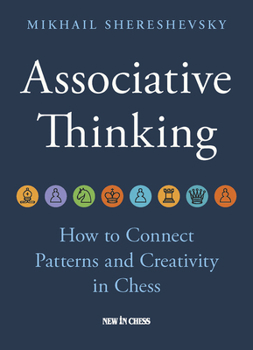Associative Thinking: How to Connect Patterns and Creativity in Chess
This new book by Mikhail Shereshevsky, one of the most respected chess trainers in the world, is about a very important but little-explored topic: associative thinking. How can a modern chess student avoid drowning in the flood of information? The answer is to stop mechanically memorizing moves and turn on your curiosity. Try to create a vivid image of the technique you are studying and remember it as an association During a game of chess, we have associations all the time. We are not talking about specific pawn structures, but about more abstract things. What is the best interaction between knight and pawn? Where should the rook be placed - behind the passed pawn or to the side? On which squares should you place your pawns when you have a bishop against a knight? Generations of chess players before us have answered these and similar questions. Shereshevsky clearly shows that studying the games of great chess players will help you to improve your associative thinking, especially when the comments come from the players themselves. The author pays special attention to such outstanding grandmasters as Ulf Andersson, Anatoly Karpov, Vladimir Kramnik, and Magnus Carlsen.As with all of Shereshevsky's books, this manual offers supreme examples of chess training excellence. Studying this book will improve your understanding of chess enormously and help you on your way to chess mastery.
Format:Hardcover
Language:English
ISBN:9083431355
ISBN13:9789083431352
Release Date:June 2025
Publisher:New in Chess
Length:304 Pages
Related Subjects
GamesCustomer Reviews
0 rating





